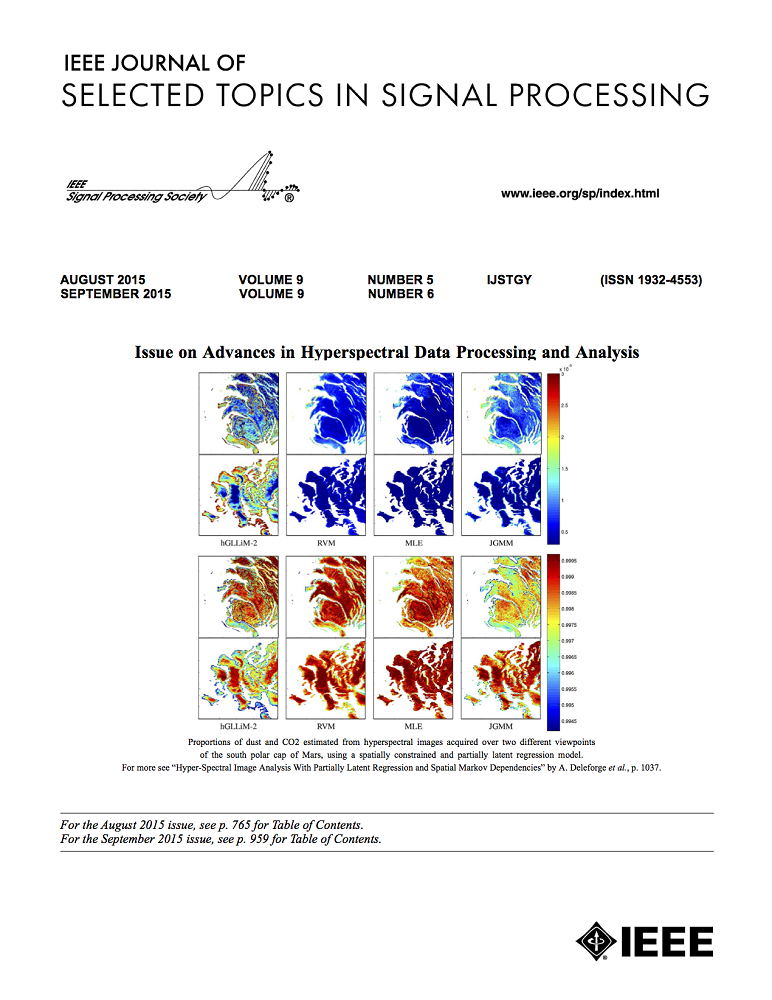A Joint Communication and Computation Framework for Digital Twin Over Wireless Networks
IF 8.7
1区 工程技术
Q1 ENGINEERING, ELECTRICAL & ELECTRONIC
IEEE Journal of Selected Topics in Signal Processing
Pub Date : 2023-12-28
DOI:10.1109/JSTSP.2023.3347931
引用次数: 0
Abstract
In this article, the problem of low-latency communication and computation resource allocation for digital twin (DT) over wireless networks is investigated. In the considered model, multiple physical devices in the physical network (PN) need to frequently offload the computation task related data to the digital network twin (DNT), which is generated and controlled by the central server. Due to limited energy budget of the physical devices, both computation accuracy and wireless transmission power must be considered during the DT procedure. This joint communication and computation problem is formulated as an optimization problem whose goal is to minimize the overall transmission delay of the system under total PN energy and DNT model accuracy constraints. To solve this problem, an alternating algorithm with iteratively solving device scheduling, power control, and data offloading subproblems. For the device scheduling subproblem, the optimal solution is obtained in closed form through the dual method. For the special case with one physical device, the optimal number of transmission times is revealed. Based on the theoretical findings, the original problem is transformed into a simplified problem and the optimal device scheduling can be found. Numerical results verify that the proposed algorithm can reduce the transmission delay of the system by up to 51.2% compared to the conventional schemes.无线网络数字双胞胎的联合通信与计算框架
本文研究了无线网络数字孪生(DT)的低延迟通信和计算资源分配问题。在所考虑的模型中,物理网络(PN)中的多个物理设备需要经常向数字网络孪生(DNT)卸载与计算任务相关的数据,DNT 由中央服务器生成和控制。由于物理设备的能源预算有限,在 DT 过程中必须同时考虑计算精度和无线传输功率。这一联合通信和计算问题被表述为一个优化问题,其目标是在总 PN 能量和 DNT 模型精度约束条件下,最大限度地减少系统的整体传输延迟。为了解决这个问题,采用了一种交替算法,迭代解决设备调度、功率控制和数据卸载子问题。对于设备调度子问题,可通过对偶法获得闭合形式的最优解。对于只有一个物理设备的特殊情况,揭示了最佳传输次数。在理论结论的基础上,原始问题被转化为简化问题,并找到了最优设备调度。数值结果证实,与传统方案相比,所提出的算法可将系统的传输延迟降低 51.2%。
本文章由计算机程序翻译,如有差异,请以英文原文为准。
求助全文
约1分钟内获得全文
求助全文
来源期刊

IEEE Journal of Selected Topics in Signal Processing
工程技术-工程:电子与电气
CiteScore
19.00
自引率
1.30%
发文量
135
审稿时长
3 months
期刊介绍:
The IEEE Journal of Selected Topics in Signal Processing (JSTSP) focuses on the Field of Interest of the IEEE Signal Processing Society, which encompasses the theory and application of various signal processing techniques. These techniques include filtering, coding, transmitting, estimating, detecting, analyzing, recognizing, synthesizing, recording, and reproducing signals using digital or analog devices. The term "signal" covers a wide range of data types, including audio, video, speech, image, communication, geophysical, sonar, radar, medical, musical, and others.
The journal format allows for in-depth exploration of signal processing topics, enabling the Society to cover both established and emerging areas. This includes interdisciplinary fields such as biomedical engineering and language processing, as well as areas not traditionally associated with engineering.
 求助内容:
求助内容: 应助结果提醒方式:
应助结果提醒方式:


